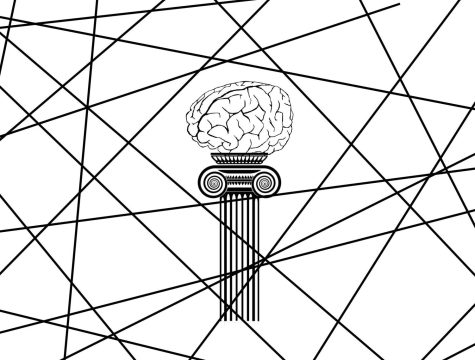Content warning: This article mentions suicide.
Think about how many people you know that have ever had a concussion. Every year, between 1.6 and 3.8 million sports-related concussions occur in the United States alone. While concussions may be common, they should not go unrecognized. Roughly 50 percent of those concussions go undiagnosed, according to ImPact Applications.
While the dangers of concussions are acknowledged in professional sports leagues such as the National Football League, National Hockey League, and National Basketball Association, they are often disregarded in high school sports.
A baseline concussion test is an assessment that gauges an athlete’s visual and verbal memory, in addition to their reaction time and processing speed before a sports season. These tests provide athletic trainers and doctors with pertinent information for assessing and treating concussions. To ensure the safety of student-athletes playing high-impact collision sports, Redwood should mandate and supply baseline concussion tests to establish a standard level of brain function.
Last year in New Jersey, 16-year-old Jared Lawney suffered a serious concussion during a high school lacrosse game. After being cleared by an athletic trainer, he returned to play only three weeks after his concussion. Despite being described by his mother as a happy kid, two weeks later, he took his own life.
Doctors believe he was still suffering with depression which was worsened by his concussion. Research suggests the rate of suicide is nearly twice as high for people who have suffered traumatic brain injuries according to Columbia Broadcasting System.
A simple baseline concussion test may have prevented Lawney’s death, and they could possibly prevent many more. Baseline concussion tests aim to act as a solution to improper concussion assessments and treatment. They make it easier to detect and access the severity of concussions by comparing the brain function of a concussed athlete to their baseline level. Athletes who suffer from a concussion but have taken a baseline test will be able to receive highly personalized concussion care, which means recovery times will be individualized and side effect risks are lessened.
David Milzman, an emergency physician at the Washington Hospital Center, sees many concussion cases daily.

“We don’t want crippled 13-year-olds because they were put back into a sporting event they should have been left out of. It’s not that complicated. Enough of this, ‘Shake it off, kid,’ stuff. Kids don’t like being pulled out of a game, but I ask them, ‘Would you rather be sucking oatmeal out of a straw the rest of your life?’” Milzman said.
Another doctor, Maryse Lassonde, holds a unique perspective on the topic being a neuropsychologist and the scientific director of the Quebec Nature and Technologies Granting Agency.
“Even when the symptoms of a concussion appear to have gone, the brain is still not yet 100 percent normal,” Lassonde said.
Furthermore, baseline concussion tests help protect the school from liability lawsuits in the case of a concussion and are useful in tracking physical and mental well-being even if you don’t have a concussion. Conditions such as anxiety, ADHD, depression and learning difficulties can be tracked with baseline concussion tests.
While some may claim that they would take too much time and resources to administer, in truth, baseline concussion tests are relatively short and cheap — and most importantly, they could save someone’s life.
Depending on the test, they take roughly 20 minutes per student. Additionally, they would only cost the school about $1,000 per year for every 1,000 students, or $2 online to take it individually. When it comes to the health and safety of our students that is an inconsequential price.
Those who oppose the usage of baseline concussion testing also claim that it is too early in concussion research to institute baseline tests, making the test unnecessary, as they are neither preventing nor protecting students from concussions. While the tests are administered early in concussion research, baseline testing is not meant to be the only factor used in determining a concussion’s severity, treatment and timeline. Traditional ways of determining these factors should be used in concurrence with the baseline test in order to certify the information that the baseline provides.
Gina Palermo is an athletic trainer in Ellicott City, Maryland who has been advocating for and instituting baseline testing in Maryland school districts.
“It isn’t the golden ticket giving the athlete the clearance to play. But it gives athletic trainers and physicians the ability to look at how the brain is doing, and it allows the school support staff to make adjustments to the student’s education plan,” Palermo said.
Although these tests don’t prevent or protect from concussions, they can mitigate the harm that concussions cause as they prioritize specialized concussion treatment which results in a faster and safer full recovery.
As a soccer and lacrosse player myself, I know the dangers that concussions threaten. If Redwood truly wants to protect student-athletes, then it is vital we spend the money and resources to institute baseline concussion tests as mandatory for those playing high-impact collision sports. The implementation of baseline tests would not only change lives for the better, but save them too.













